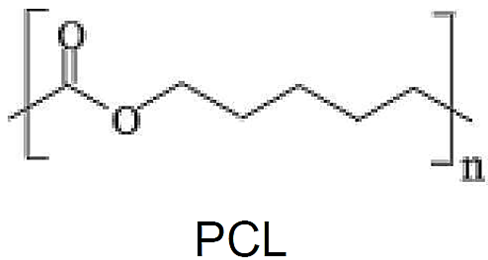
(Poly(E-caprolactone) or poly(6-hydroxy-hexanoate) (PCL
 المؤلف:
Faris Yılmaz
المؤلف:
Faris Yılmaz
 المصدر:
POLYMER SCIENCE
المصدر:
POLYMER SCIENCE
 الجزء والصفحة:
p30
الجزء والصفحة:
p30
 13-4-2016
13-4-2016
 1142
1142
Poly(E-caprolactone) or poly(6-hydroxy-hexanoate) (PCL)
PCL is a biodegradable polyester obtained from raw materials originating from petroleum, through ring opening polymerization of the lactone with suitable catalysts (Figure 2).

It has good resistance to water and organic solvents. PCL is a polymer stable against abiotic hydrolysis, which occurs slowly with molecular weight decrease. Its melting temperature is low, as its viscosity, facilitating its thermal processing. PCL may present spherulitic structure. It is a soft and flexible polymer, that may be used in blends with other biodegradable polymers, such as starch. A major global manufacturer is Solvay (Capa, 5,000 t per year). Some applications are foamed food trays, bags, bioabsorbable medical items, replacement of gypsum in the treatment of broken bones, etc.
PCL may be degraded by many microorganisms, including bacteria and fungi, that are spread by soils and water bodies. However, an initial stage of abiotic hydrolysis appears to be necessary. The rates of hydrolysis and biodegradation depend on molecular weight and crystallinity. Pronounced biodegradation occurs with molecular weights below about 5,000 g-mol-1. Abiotic and biotic degradation take place preferentially in the amorphous phase. Certain PCL-depolymerases, such as Pseudomonas lipase, can hydrolyse both amorphous and crystalline PCL phases. Enzymes from the two major classes of excreted esterases-lipases and cutinases - are able to degrade PCL and its blends .Biodegradation causes surface erosion, without reduction of molecular weight.
 الاكثر قراءة في كيمياء البوليمرات
الاكثر قراءة في كيمياء البوليمرات
 اخر الاخبار
اخر الاخبار
اخبار العتبة العباسية المقدسة


